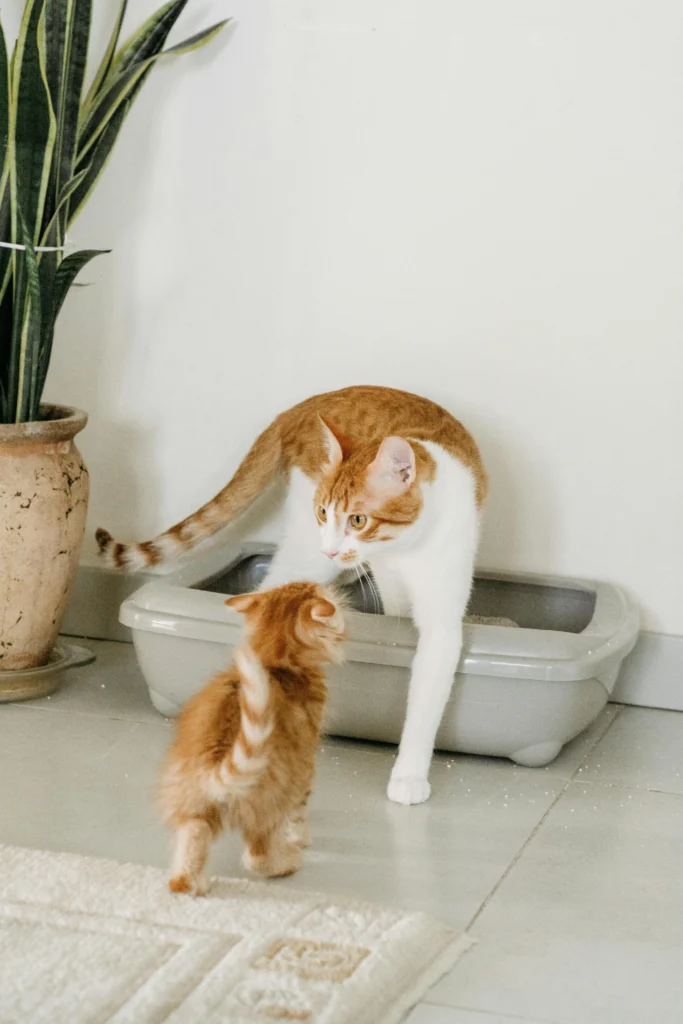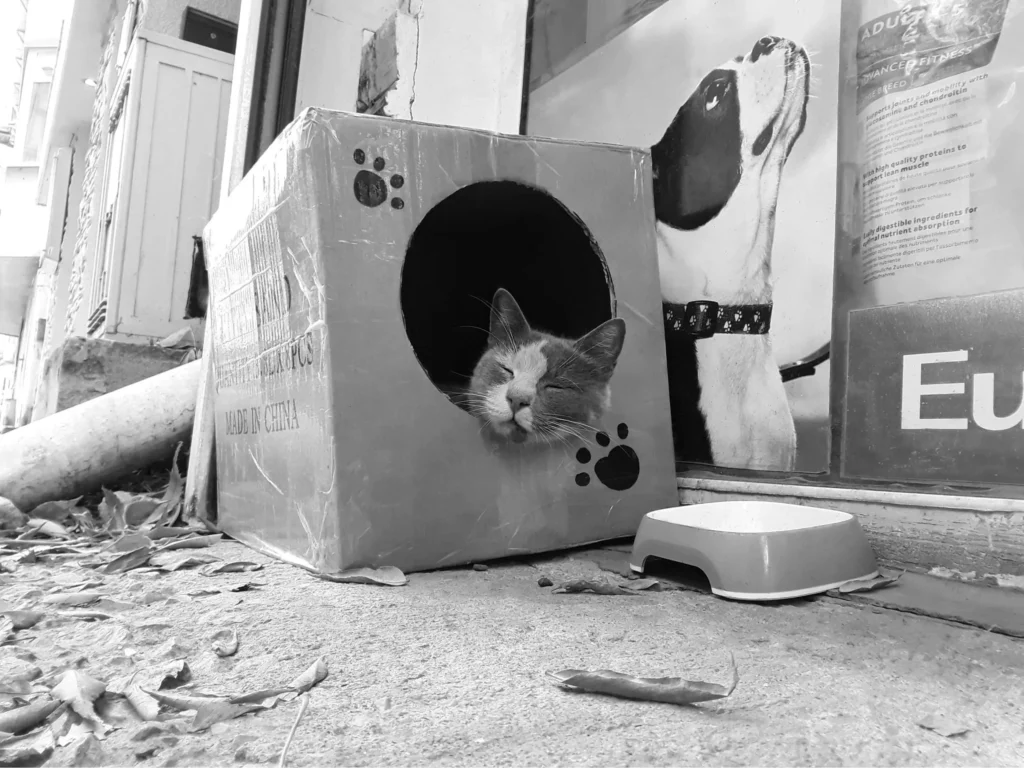How to Train Your Kitten to Use the Litter Box
Are you looking for step by step guide: How to Train Your Kitten to Use the Litter Box? One of the biggest steps toward a happy, healthy, and peaceful home for you and your feline partner is litter training a kitten. Thankfully, kittens have an instinctive desire to bury their waste, so they might learn fast if they are provided with the appropriate amount of patience and guidance on how to use a litter box. In this comprehensive guide, we will show you how to train your cat to litter perfectly, making sure that every step in litter training is done correctly choosing the best litter box to solve some common problems.
Why Litter Training Is Important?
In this Guide, you will learn How to Train Your Kitten to Use the Litter Box. Litter training is not just about convenience; it’s about giving your kitty a clean, safe space. Poor litter training could lead to a troubled relationship with your cat due to stress-related problems such as inappropriate elimination. You are laying the groundwork for lifetime healthy toilet habits by training your kitten when they’re young.
1. Setting up the Purrfect Litter Box:
Choosing the Right Litter Box.
The first thing you do when litter training kittens is choose the right size of litter box. You might think that this is a no-brainer, but there are some things to keep in mind:
- Size: Kittens are small, but they grow fast. Choose a litter box that will accommodate them as they get bigger. The box should be large enough for the kitten to turn around and dig in with ease.
- Accessibility: Because your kitten is small, you should opt for a litter box with low sides or an entrance easily accessible. As they grow you may upgrade to a box with higher edges to minimize clutter.
While some owners prefer enclosed litter boxes because they think that these trap odors better, others may think enclosed litter boxes feel confining or that kittens are less likely to use them. Open litter boxes are more accessible, but open boxes have the potential to blow more litter. Start with an open box and, if necessary, move on to an enclosed one.
- Choosing the Right Litter: The type of litter you use will be one determinant of how long it takes for your cat to start using a litter. There are two basic types of trash to be had these days in markets. These include:
- Clumping Litter: Perhaps the most common type of pick for many is clumping litter as it makes scooping a much easier affair. Some clumping litters can be dusty, which may cause respiratory problems in sensitive kittens.
- Non-Clumping Litter: This type of litter doesn’t clump but absorbs waste. Although it tends to cause fewer dusts, cleaning is required more frequently to keep the litter fresh.
- Silica Gel Crystals Litter: These crystals are ideal for absorbing moisture and eliminating smells. On the downside, they won’t like having their paws crushed by your kitten’s antics and can be a bit unforgiving to a kitten’s paws.
How many litter boxes?
It’s a rule of thumb to have at least as many litter boxes as you have cats you keep in the house. For example, if you have a single kitten living on its own, then two litter boxes are sufficient to ensure that your kitten will always have a clean area available to go to. Put them in different parts of the house for the kitten to choose from.
2. Introducing Your Kitten to the Litter Box:
You introduce them after you have placed the litter box in front of your kitten.
Introduction Step-by-Step:
- Location of Litter Box: Provide a quiet room for the litter box preferably as a private room. Do not position the litter box near a noisy appliance like the washing machine, or a busy room.
- Introduce Kitten to Litter Box: As soon as you bring that little kitten home, take him to the litter so he can become familiar with it and know it. He may just walk away.
- Place Your Kitten in the Litter Box After Its Meals and Naps: Kittens feel like urinating after eating or waking up from sleep. Take your kitten and put it in the litter box at such times that it gets accustomed to them.
- Give Incentives to Digging: Instill encouragement on digging by placing your kitten’s paws into the litter. It teaches them that trash goes with their instinct of covering excrement.
3. Litter Training and Positive Reinforcement Methods:
- Evaluate and Incentivate: The best method to train a cat is by rewarding him. Nowadays, this can be done by giving the feline a little treat or a verbal appreciation every time he performs in the litter. This will let them know that the idea of going into the box is something they want to continue doing.
- Avoid Punishment: Do not punish or scold the kitten when it has an accident outside the litter box. Kittens won’t understand punishment, which might make them fearful or uncomfortable. Scoop up the mess carefully, along with removing any remaining odors, by washing the area thoroughly. Gently coax the kitten back into the litter box.
- Agenda Making Plan: Kittens are creatures of habit. Urinate your kittens regularly. Do it after every meal or nap. Feed times and playtimes will then be a routine throughout the day, where their habit of using the litter box will improve. Troubleshooting common litter training problems 4. Even the best preparation can sometimes take a backseat to some last-minute hiccups when litter training kittens. Let’s review some of the most common problems and solutions.

4. Troubleshooting Common Litter Training Issues:
Even with the best preparation, some kittens may encounter hiccups during litter training. Let’s explore some common challenges and how to address them.
- Kitten Refuses to Use Litter Box: If your kitten always rejects the litter box.
- Location of the litter box: The litter box is in a noisy or high-traffic area. Try to shift it to a quieter place where your kitten may feel safe.
- Dirty Litter Box: Kittens are very clean animals. If the litter box isn’t cleaned for a couple of days, they will just stop using it. Waste scoop at least once every day and change the litter completely one time per week.
- Type of litter: The litter may not be comfortable for your kitten; so they are going to avoid it. Try some other texture of the litter that may suit your kitten.
- Outdoor accidents: Kittens will have accidents out of the litterbox periodically; this can happen with an intact kitten in the initial stages of litter training. What to do
- Clear Up the Accidents Quickly: Just make sure to use an enzymatic cleaner to have that smell disappear. That way, your kitten will not come back to the same spot the next time.
- Lock Up Your Kitten: If accidents occur frequently, pen your kitten in a smaller room, say a bathroom or laundry room, where the litter box is accessible. At times this may be enough to just prop up the habit of using the litter box.
- Kitten playing in litter box: Kittens rarely play with litter boxes; especially when young and interested, they might play inside their litter box. Although messy, most of these behaviors fade away as kids grow older. You can distract them with toys, but you can also move the litter box to a quieter area.
5. Health Problems with Litter Training:
At other times, litter training problems arise from other health problems. If the kitten continues to avoid the litter box or has recurrent accidents, always contact your veterinarian to rule out a hidden medical condition.
- UTI: Urinary Tract Infection UTIs are very common in young cats and have come to present with recurring urine and painful litter box use. If your kitten is exhibiting dysuria or blood in the urine, take the kitten to the vet right away. Constipation Sometimes, kittens get constipated and are not able to use the litter box. Symptoms of constipation may include frequent bowel movements that have become infrequent, straining, and screaming in pain. If you feel that this might be your kitten’s problem, schedule a consultation with your veterinarian.
6. Sustaining Long-Term Positive Litter Box Habits:
Once housebreaking has been successfully done to your kitten, good litter box habits must be maintained in the long-term interest of the health and well-being of your kitten. The following tips will help keep your kitten on track:
- Cleanliness at those times: Clean out the litter box occasionally for bad smells and make sure that it likes to use it. Clean out the solid waste every day, and refresh the litter itself every week.
- Maintain the litter variable: Never change litter on your cat once they get used to a particular one. Changing litter can easily confuse the cat and cause accidents in the house.
- Final Thoughts: It may be too complex litter train a kitten at first, but by patience and consistency with positive reinforcement, litter training may become easy and effective. By doing that, you would also assist your kitten in lifetime useful habits to the toilet. Every kitten is different, and it would be necessary to be careful about observing the needs of your kitten.
Soon enough, your kitten will master the art of using the litter box. It will bring tidiness and joy to your home as well as to you.
Conclusion:
Litter training a kitten might seem challenging at first, but with patience, consistency, and the right approach, your kitten can develop clean habits that will make life easier for both of you. Remember to keep the litter box setup simple, use positive reinforcement, and troubleshoot any issues with empathy. Establishing good litter box habits early on not only keeps your home clean but also supports a healthier, happier life for your feline friend.
For more tips and resources on raising a happy, well-trained pet, visit PetMerk.com. We’re here to help you every step of the way!
You can check at PetMerk.com for more resources about loving happy, healthy pets!
















1 thought on “How to Train Your Kitten to Use the Litter Box”